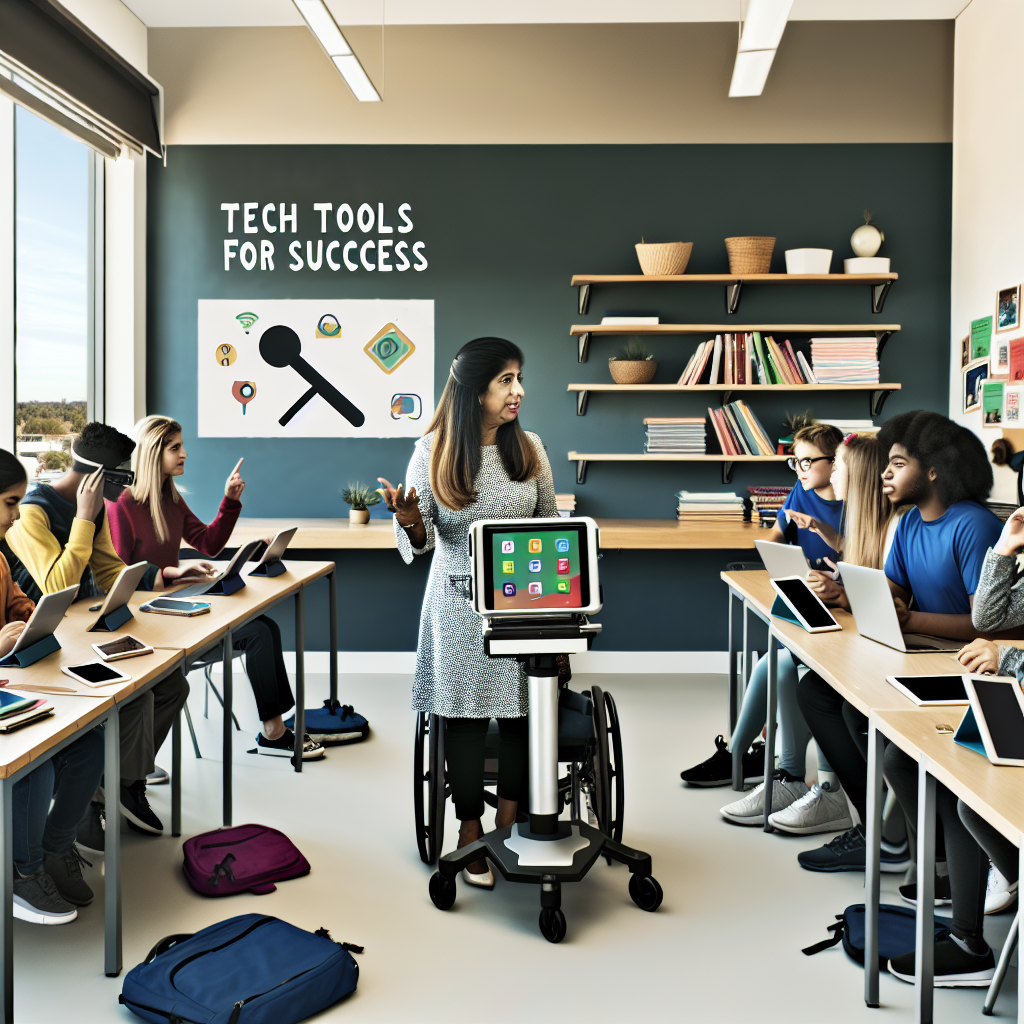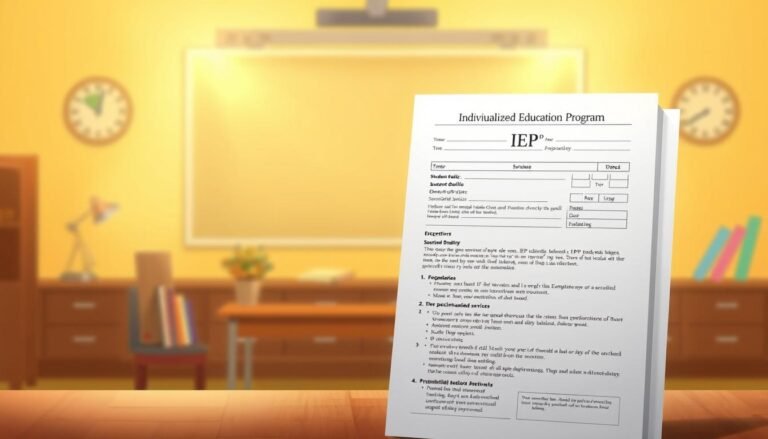
Tech Tools for Success: Helping Students with Learning Disabilities Thrive in the Classroom
Introduction
In today’s rapidly evolving educational landscape, technology offers unprecedented opportunities for enhancement and engagement—especially for students with learning disabilities. These learners often encounter unique challenges that hinder their academic success, but innovative tech tools can help bridge those gaps. The focus keyword for this discussion is "Tech Tools for Success: Helping Students with Learning Disabilities Thrive in the Classroom." By employing thoughtful technologies, educators can facilitate an inclusive classroom environment where every student can flourish.
Understanding Learning Disabilities
Before diving into the tech tools available, it’s essential to understand what learning disabilities encompass. According to the National Center for Learning Disabilities, these disabilities can affect a student’s ability to read, write, speak, and perform mathematical calculations. Some of the most common types include dyslexia, dysgraphia, and dyscalculia.
Case Study: Sara’s Journey with Dyslexia
Take Sara, a 10-year-old student diagnosed with dyslexia. Reading comprehension has been a long-standing challenge for her, leading to frustration and disengagement in the classroom. With the introduction of specific tech tools, Sara experienced a dramatic turnaround. Using text-to-speech software, she could listen to stories, significantly improving her comprehension and enjoyment of reading.
The Role of Tech Tools in Education
Engaging Learning Platforms
The modern classroom can harness various interactive platforms designed to engage students and accommodate diverse learning needs. Platforms like Google Classroom and Nearpod facilitate inclusive learning experiences.
Table: Benefits of Engaging Learning Platforms
| Platform | Benefits |
|---|---|
| Google Classroom | Streamlined communication between teachers and students |
| Nearpod | Interactive lessons that accommodate various learning styles |
| Seesaw | Opportunities for students to showcase their understanding creatively |
Assistive Technologies
Assistive technology plays a critical role in leveling the playing field for students with learning disabilities. Here’s a closer look at some essential tools.
1. Text-to-Speech Software
Programs like Kurzweil and NaturalReader convert written text into spoken words. These tools are invaluable for students struggling with reading, allowing them to access information in a more digestible format.
2. Speech-to-Text Software
Speech-to-text tools, such as Dragon NaturallySpeaking, enable students to dictate their thoughts verbally. This is particularly beneficial for students with dysgraphia, who may struggle with writing.
Case Study: David’s Experience with Speech-to-Text
David, a high school student with dysgraphia, found that using speech-to-text software allowed him to articulate his thoughts clearly without the frustration of writing by hand. His grades improved, and he regained confidence.
Customized Learning Experiences
Tech tools empower teachers to provide tailored education, accommodating the individual needs of students with learning disabilities.
Adaptive Learning Technology
Tools like IXL and DreamBox Learning gather data to provide personalized learning paths based on each student’s performance. This adaptability is key to helping students progress at their own pace.
Table: Adaptive Learning Tools
| Tool | Key Features |
|---|---|
| IXL | Provides personalized math and reading practice |
| DreamBox Learning | Uses real-time data to adapt lessons dynamically |
Gamification in Learning
Gamifying the educational experience can also enhance engagement. Platforms like Kahoot! and Quizizz transform traditional learning into interactive, game-like experiences that motivate students to participate actively.
Case Study: Mia’s Transformation
Mia, a third grader with ADHD, struggled to focus during traditional lessons. After incorporating gamified learning through platforms like Kahoot!, her attentiveness and participation soared. She reported enjoying lessons more and felt more engaged with her peers.
Teacher Collaborations
The integration of tech tools is not solely the responsibility of students; educators must collaborate and continuously share resources to enhance learning outcomes.
Professional Development
Educators can benefit from ongoing training on these technologies and their applications. Workshops focusing on specific tech tools can empower teachers with the knowledge they need to implement these strategies effectively.
Collaboration Tools
Utilizing tools like Slack or Microsoft Teams encourages collaboration among teachers. They can share successful strategies, discuss challenges, and exchange resources, ultimately improving outcomes for students with learning disabilities.
The Importance of Monitoring Progress
Tracking the progress of students using these tech tools is crucial for accountability and effectiveness. Many platforms offer analytics features, enabling teachers and parents to monitor improvements in real-time.
Feedback Mechanisms
Regular feedback through tools like Google Forms can help educators gauge student understanding and adapt their teaching methods accordingly.
Table: Effective Feedback Mechanisms
| Method | Benefits |
|---|---|
| Google Forms | Quick surveys for immediate feedback |
| Peer Review | Encourages collaboration and critical thinking |
Parental Involvement
Parental engagement can amplify the benefits of tech tools. By keeping parents informed and involved, students can gain added support at home.
Home Learning Tools
Educational apps like Khan Academy and BrainPOP allow parents to continue learning at home, reinforcing skills and concepts introduced in the classroom.
Future Trends in Tech Tools
As technology continues to evolve, so too will the resources available for students with learning disabilities. Emerging trends include artificial intelligence and virtual reality, which promise even more personalized learning experiences.
AI-Powered Tools
Artificial intelligence can assess learning styles and adapt content accordingly. Tools like Squirrel AI use machine learning algorithms to create customized learning pathways.
Virtual Reality for Immersive Learning
Virtual reality (VR) can create immersive classrooms where students engage with content in a hands-on manner. This can be particularly valuable for students with various learning disabilities, providing interactive environments to explore.
Case Study: Andrew’s VR Experience
Andrew, a student with autism, thrived in a virtual field trip setting where he could explore subjects at his own pace without the anxiety of a traditional classroom environment.
Conclusion
The 21st-century classroom is not just a physical space—it’s a tech-enabled environment where tools play a pivotal role in helping students with learning disabilities succeed. The use of "Tech Tools for Success: Helping Students with Learning Disabilities Thrive in the Classroom" is not merely about accessibility; it’s about empowerment. By creating engaging, individualized, and collaborative educational experiences, we can transform the academic journeys of students like Sara, David, Mia, and Andrew.
Throughout this article, we’ve seen how technology serves as a bridge to success and opportunity. Let’s inspire educational practitioners to embrace these tools and cultivate an inclusive atmosphere where every student can thrive.
FAQs
1. What are some examples of learning disabilities?
Learning disabilities include dyslexia, dysgraphia, dyscalculia, and attention-deficit/hyperactivity disorder (ADHD).
2. How can tech tools help students with learning disabilities?
Tech tools can provide customized learning experiences, assistive technology, and engaging platforms that cater to individual learning needs.
3. Are there affordable tech tools available for schools?
Yes, many free or low-cost tools exist, including Google Classroom, Khan Academy, and various text-to-speech apps.
4. How can parents support their children using tech tools at home?
Parents can engage with educational apps and encourage practice at home, reinforcing concepts learned in the classroom.
5. What role do teachers play in implementing these tech tools?
Teachers must be knowledgeable about the tools, use them effectively, and adapt teaching strategies based on student needs.
6. Is training available for educators to learn about these tools?
Yes, many professional development programs and workshops focus on integrating technology into the classroom for students with learning disabilities.
By addressing these common questions, we hope to clarify the role of technology in educational environments and encourage meaningful dialogues surrounding the topic of "Tech Tools for Success: Helping Students with Learning Disabilities Thrive in the Classroom."
















